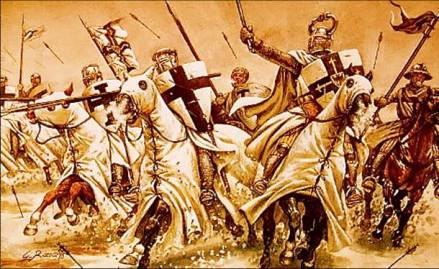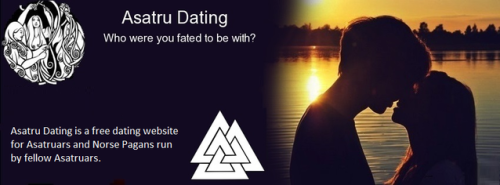I think I’ll just let the mystery be. – Iris Dement
A nuanced approach to these subjects can be a breath of fresh air in an intellectual environment where accusations and stances of purity (“The blood of Albion flows in these veins,” boasts one stalwart) seem to be the norm. And this obsession with doing things right leads me to certain conclusions.
First, my own reading of the anthropological literature indicates that no indigenous person in his or her right mind would choose to become a “shaman.” That life is a calling, and it often seems to be fraught with loneliness, poverty, suffering and often madness. It is a role performed for the community, not the individual, and lived on the outskirts.
Second, consider what second-century Christianity looked like – a branch of Judaism focused on love – and what it became by the end of the fourth century – the official, universal and only religion of the Roman Empire, dedicated to wiping out all competition. I’m not suggesting that Neopaganism will move in that direction, only that all its branches are very young and are still evolving.
But there is a huge difference. Christianity was born in a pagan world and took (appropriated) much of its symbolism and practice from those traditions that still were connected to nature (paganus: people of the hills). Neopaganism has been reconstructed in the mid-to-late 20th century, after two millennia of Christian (and three millennia of monotheistic) thinking; that is, they and all modern people have all matured within and are all susceptible to literalized thinking.
We like to think that we can understand metaphors and tolerate nuance and ambiguity. To do this, however, is to resist a profoundly durable inheritance, and we easily slip into the default mode of literalism. James Hillman, speaking of American myth and culture, said that “…we are each… like it or not, children of the Biblical God. It is a fact, the essential American fact.” Our monotheistic heritage determines our thinking about identity, race, gender, body, war, time, sin, self and other. Historian Regina Schwartz wrote, “… if we do not think about the Bible, it will think (for) us.”
Since all modern people share this monotheistic consciousness to some degree, wrote Hillman, we are all “psychologically Christian.” He saw this even in the sophisticated world of psychotherapy: “Because a monotheistic psychology must be dedicated to unity, its psychopathology is intolerance of difference.” This is our American condition: our ego psychology mirrors our economics, with their common assumption of the “heroic, isolated ego in a hostile world.”
This is a heritage of large, state-sponsored religion, or ideology. In this monotheistic world such systems of thought allow no alternative viewpoints. Michael Meade has argued that ideologies (modern, literal thinking) force us to think the same idea, while myth invites us to have our own ideas about the same thing (indigenous, nuanced thinking).
Most of the time when we judge others as impure or not authentic enough, we are actually talking about identity – personal or group; we are struggling with the question of who we are, not who the outsider is.
Consider this analogy. It is quite literally true that what we see visually is the inside of our own eyeballs. Psychological projection works in essentially the same way. The Other inhabits our imagination to enable us to define the boundaries, and when those boundaries become particularly hard to know – as in our current politics – our concern about otherness rises into racism and xenophobia.
As I have written in Chapter One of my book, when we reduce things from the symbolic to the literal, we are inside a myth and don’t know it. Unconsciously enacting such a narrative (or several at once), we are in mythical thinking and repeat unsatisfying behavior without any positive change. We see others in one-dimensional images and we reduce multi-layered mystery to the simplistic dualisms of monotheism: whatever isn’t aligned with our god must necessarily follow his opposite. Here is a clue: if your people consider their story to be literally true and other people’s stories are “myths,” then you and your people are thinking mythically or literally. Other mono-words share the brittleness of one correct way: monopoly, monogamy, monolithic, monarchy, monotonous. This is what Joseph Campbell was implying when he spoke of our “demythologized world.”
If we reduce a symbol to a single meaning, if we confuse a myth with historical truth, or if we allow dogma to determine the effect the symbol is supposed to have, the symbol dies. Since monotheism rejects ambiguity and diversity, it requires belief, which implies not merely a single set of truths but also the obligation to convert – or eliminate – others. In this context, many of the gatekeeping statements can be read as monotheistic, “either-or” statements, such as this one, by Larisa Pole: “To become fully Asatru,” writes one must accept Asatru as their own belief system.”
Granted, she isn’t claiming that this is the only, right belief system, but it’s still about believing, and Americans believe things within a Protestant lexicon that has taken that word very far from its Old German meaning: rooted in love. Statements such as hers beg for anarchistic and humorous responses, and Hillman had one: “The Gods don’t require my belief for their existence, nor do I require belief for my experience of their existence.” Likewise, astrologer Caroline Casey encourages us to “believe nothing… entertain possibilities.”
Now of course, more than any spiritual approach to the Great Mystery, Neopagan thinking appreciates diversity, and it represents a long-overdue alternative to this heritage. The Goddess is returning! But here is where I found myself wondering about some of the basic, perhaps unconscious assumptions I saw throughout Talking about the Elephant, where the words paganism, shamanism and shamanist kept turning up along with religion, worship, belief systems – and most annoying to me, faith.
Those suffixes (word endings) – ism, ist – bother me. In Siberian villages, where the term “shaman” originated, it would never occur to anyone to add “ism” to it in order to imply a distinctive doctrine or theory with a clear set of beliefs and moral injunctions. In such places, as David Abram writes, a shaman is quite simply one who mediates between the world of the living, the world of nature and the realm of the unseen spirits and ancestors.
Similarly, why should we assume that any practice, spiritual or artistic, “belongs” to any one group? Again, it’s complicated. In my poetry world, the 14th-century mystical Persian poet Hafez is nearly as popular as Rumi. There are many translations of his books, but the most popular are by Daniel Ladinsky, who does not speak Persian. Indeed, he claims that he has more or less channeled Hafez through his own original poetry, unlike Coleman Barks, who translates Rumi by rendering literal translations into American free verse.
Omid Safi is no prig. He actually likes Ladinsky’s poems. However, he insists that:
This is…spiritual colonialism…a matter of power, privilege and erasure…the world of culture is inseparable from the world of politics. So there is something sinister about keeping Muslims out of our borders while stealing their crown jewels and appropriating them not by translating them but simply as decor for poetry that bears no relationship to the original. Without equating the two, the dynamic here is reminiscent of white America’s endless fascination with Black culture and music while continuing to perpetuate systems and institutions that leave Black folk unable to breathe.
Or how about the case of Paul Simon, who in 1986 ignored a worldwide cultural boycott of South Africa, travelled there and hired local musicians to record his classic album Graceland? A huge debate ignited over the line between honoring an underrepresented population (in this case, putting a human face on apartheid) and appropriation of its culture. Some called Graceland a form of modern colonialism. Twenty-five years later, the controversy was documented in the film Under African Skies, in which Simon reunites with his collaborators and then meets one of his most outspoken critics. Each side presents their case without rancor or bitterness.
It’s complicated. Kwame Anthony Appiah writes:
The real problem is that ownership is the wrong model. The arts flourished in the world’s traditional cultures without being conceptualized as “intellectual property”, and the traditional products and practices of a group – its songs and stories, even its secrets – are not made more useful by being tethered to their supposed origins. But vigorous corporate lobbying has helped the idea of intellectual property to conquer the world. To accept the notion of cultural appropriation is ultimately to buy into a regime where corporate entities, acting as cultural guardians, “own” a treasury of intellectual property and extract a toll when others make use of it.
Granted, we are running up against the limits of the English language here, but these words point toward ideologies, systems of thought, where we all too familiar with narratives in which the only ways to deal with the Other is either to convert him or to exterminate him.
As with early Christianity, any spiritual or artistic system can begin in reaction against an old, outmoded, calcified ideology, then become obsessed with identifying the impure, devolve into a new fundamentalism and end in tragedy as a crusade.
I stress these concerns because I and, I assume, most of my readers are white Americans, and of all peoples, we have a special responsibility to remember our old tendency to identify – and devalue – other people as impure and to deal with them with extreme prejudice. We are called to remember that America is still very much a Puritan nation, and that this has led us toward two extreme positions – hatred of our own bodies, and a rock-solid belief about the poor and the victims of capitalism, that their condition is their own fault. The first position makes us sick and the second keeps us innocent.
Am I being picky here, voicing my concerns about other people being picky? Again, the language itself channels us toward the old monotheistic assumptions. Why not utilize perfectly useful phrases such as “spiritual path,” or “tradition,” which Jenne Micale, with the humor I like to see, defines as “…we’ve done it for quite a while, and no one remembers when the first one was.”
In the long run – the very long run, and if we survive the environmental threats that our monotheistic, fundamentalist, disembodied ideologies have generated – the myths that undergird the myth of American innocence will have to collapse. And Neopaganism, with all its cultural appropriations, is precisely situated to be the environmentally-conscious tradition and set of practices that can facilitate this transition. But it must become conscious of its tendency toward monotheistic thinking. It must see through its own language and its own unconscious assumptions. It – we – must learn to see indigenous ways on their own terms, to stop appropriating them by viewing them through our own cultural prejudices, to stop making earth-based, radical ritual into High Church.
We can begin that work by accepting the mystery, by dropping our need to be right all the time, to realize that our judgments about the “purity” of other’s beliefs are really our own projections. So, for now, on my own pilgrimage through this marvelously fascinating world, I suggest that literalizing may well be the ultimate – if not the worst – form of cultural appropriation.
Part Seven (the conclusion) of this essay is here.

